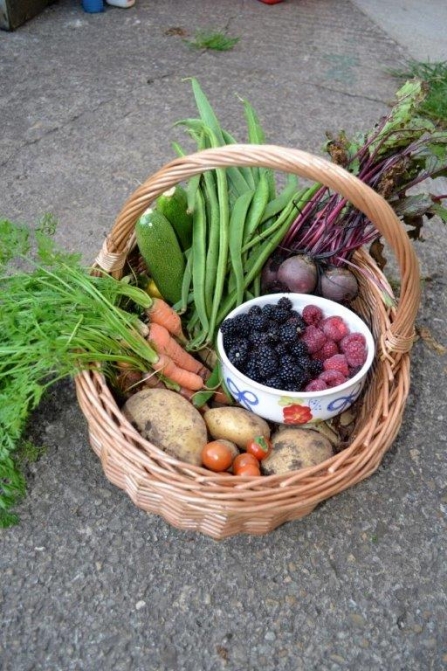Robert Michael Pyle may be best-known as an American butterfly and moth expert, but he clearly knows a thing or two about weeds.
In fact, his wise words on the subject were painted on a hoarding at a recent Royal Horticultural Show and immediately came to mind when I returned from my summer holiday to find my raspberry patch smothered in a thick cloak of bindweed.
“But make no mistake: the weeds will win; nature bats last,” Robert once uttered, and, just as Ben Stokes and his team brought England back into contention for the 2019 Ashes series, the gardener’s scourge mounted a spectacular fight back at the beginning of August.
Removing this vigorous and deeply-rooted weed isn’t easy now that the raspberry canes are loaded with fruit, and its presence makes picking more difficult, but I’m forced to admire its tenacity, and its flowers are clearly a hit with a host of insects. Seeing my canes smothered in bindweed makes it easy to understand why some farmers and growers reach for the glyphosate, but given my aim to garden in a way that’s friendly to wildlife – which includes leaving some nectar-rich weeds in place for early flying insects – I’ll be going about dealing with this irritating adversary in a more labour-intensive way. Over the coming weeks I’ll be busy cutting it back and piling up the rotting foliage in builders’ bags, on which I’ll grow a few potatoes next spring, and doing my best to pull out as much of its roots as I can. In the meantime I’m fixing my gaze on a cheery block of sunflowers and late summer roses that bring an injection of colour to the plot and away from the rampant weeds!
Pumpkin Power!
Other plants that have been making their presence felt are the pumpkins growing on various manure heaps dotted around the allotment. These are clearly on a mission to succeed, sending out long leafy tendrils in all directions. I’ve also spotted a number of healthy-looking pumpkins swelling in the early September sun ready to be carved into Hallowe’en jack o’lanterns in October.
This is the time of the year when the allotment is at its most bountiful, with seemingly unlimited crops of fruit and vegetables ready for the picking.
The blackberries trained against the shed are laden this year, as are the autumn raspberries. There are too many berries to eat now, but several pounds are now tucked away in the freezer or made into jam to enjoy later, and there’s still enough for the birds as the season wears on.
Bringing in the Harvest
There are potatoes to dig up, beetroot and carrots to pull and still plenty of tender ‘White Lady’ runner beans to pick and, for the first time this year, I’m able to harvest my own tomatoes from the ‘Sweet Aperitif’ plants growing against the sunny south-facing side of the allotment shed.
Amid all the picking, and half-hearted attempts to remove weeds in order to restore a bit of order to the plot, it’s the time of year to start thinking about gathering up fallen leaves for this year’s leaf mould pile.
Leafy Goodness
There’s something incredibly satisfying about turning garden waste into a valuable soil improver, while simultaneously providing a warm spot for hibernating wildlife. In a year’s time the countless bags of leaves that I wheel up to the allotment will have turned into a crumbly rich, black substance to spread over the surface of the soil ready to protect it from the worst excesses of winter.
Other ways to reduce erosion by snow, wind and rain include sowing ‘green manure’ seeds, such as my favourite Phacelia tanacetifolia. Over the coming months these will grow into small but tenacious plants that will cover the surface of the soil. Come early spring I’ll chop off the foliage and dig them and the roots into the soil to provide a bit of extra nourishment, although I’m bound to leave a few to flower for the bees and other insects later on.
September has only just arrived but there’s a definite reduction in temperature as autumn approaches.
It’s time to gather up all I’ve sown and start preparing the allotment for the cold winter months ahead in the hope that it will be in good heart for next year’s crops.

